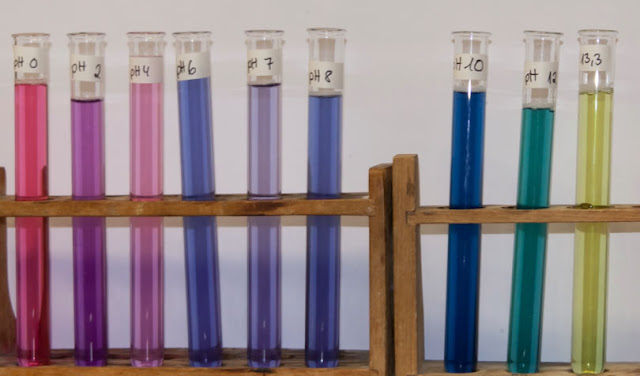Anthocyanin Biosynthesis & Pigment
Anthocyanins and carotenoids contribute distinctive pigmentation to blood oranges Anthocyanin pigments are assembled like all other flavonoids from two different
Streams of chemical raw materials in the cell:
One stream involves the shikimate pathway to produce the amino acid phenylalanine, (see phenylpropanoids) The other stream produces three molecules of malonyl-CoA, a C3 unit from a C2 unit (acetyl-CoA) These streams meet and are coupled together by the enzyme chalcone synthase, which forms an intermediate chalcone-like compound via a polyketide folding mechanism that is commonly found in plants.
The chalcone is subsequently isomerized by the enzyme chalcone isomerase to the prototype pigment naringenin,
Naringenin is subsequently oxidized by enzymes such as flavanone hydroxylase, flavonoid 3' hydroxylase, and flavonoid 3' 5'-hydroxylase.
These oxidation products are further reduced by the enzyme dihydroflavonol 4-reductase to the corresponding colorless leucoanthocyanidins Leucoanthocyanidins once were believed to be the immediate precursors of the next enzyme, a dioxygenase referred to as anthocyanidin synthase, or, leucoanthocyanidin dioxygenase; Flavan-3-ols, the products of leucoanthocyanidin reductase (LAR), recently have been shown to be their true substrates.
The resulting unstable anthocyanidins are further coupled to sugar molecules by enzymes such as UDP-3-O-glucosyltransferase, to yield the final relatively-stable anthocyanins.
Thus, more than five enzymes are required to synthesize these pigments, each working in concert. Even a minor disruption in any of the mechanisms of these enzymes by either genetic or environmental factors, would halt anthocyanin production. While the biological burden of producing anthocyanins is relatively high, plants benefit significantly from the environmental adaptation, disease tolerance, and pest tolerance provided by anthocyanins.
http://www.bestbilberry.com




Comments
Post a Comment